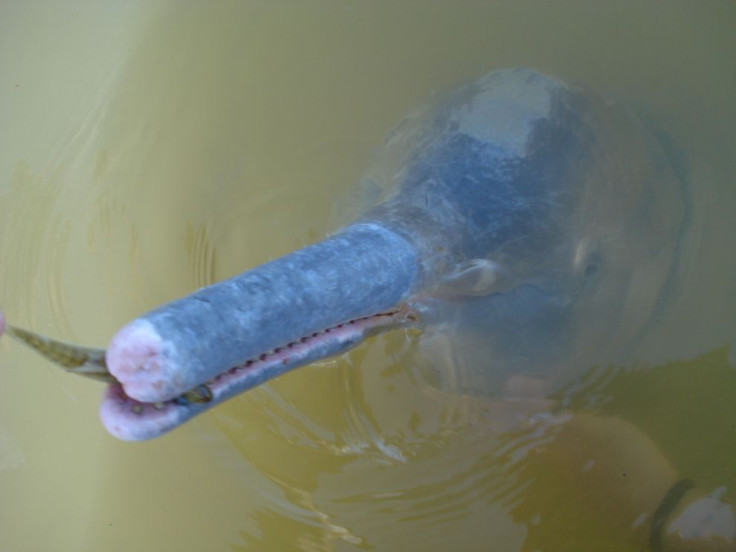
It's hard to imagine not knowing all the species of dolphins, given that the cetacean mammal is one of the largest that lives in the waters, but that is exactly what a new finding by scientists has shown: That there is a lot we have yet to discover about the creatures that inhabit our planet. Scientists have reportedly identified a new species of river dolphin -- a family of dolphins that inhabits the freshwater rivers and estuaries of Asia and South America--in the Araguaia River basin of Brazil according to a new study published in online journal PLOS One.
"It was something that was very unexpected, it is an area where people see them all the time, they are a large mammal, the thing is nobody really looked," said lead author Dr. Tomas Hrbek of the Federal University of Amazonas, when speaking to BBC News. "It is very exciting."
It is disclosed in the study -- titled "A New Species of River Dolphin from Brazil or: How Little Do We Know Our Biodiversity" -- that the suggested name for the new dolphin species is Inia araguaiaensis, it is coliqually being called Araguaian boto, and the dolphin is a highly endangered species. The researchers cite that there are only 1,000 of the Araguaian boto dolphins living in the Araguaia river basin. In fact, river dolphins, as a group, are considered to be one of the rarest creatures in the world, as out of the four known species, there are on the Red List (i.e. critically endangered), as stated by the International Union for Conservation of Nature (IUCN).
Here are four things to know about the new dolphin species:
1. Evolutionarily speaking, the Araguaian boto dolphins are believed to have separated from the other river dolphins in South America (Inia geoffrensis and Inia boliviensis) more than two million years ago. Dr. Herbek and his colleagues' analysis of the new dolphin species' genes suggests that the new dolphin species became isolated from their fellow river dolphins 2.08 million years ago after waterfalls and rapids cut off the the Araguaia-Tocantins basin from the Amazon river system.
"We looked at the mitochondrial DNA which is essentially looking at the lineages, and there is no sharing of lineages," said Dr. Hrbek to BBC. "The groups that we see, the haplotypes, are much more closely related to each other than they are to groups elsewhere. For this to happen, the groups must have been isolated from each other for a long time. The divergence we observed is larger than the divergences observed between other dolphin species."
2. What distinguishes the Araguaian boto from other river dolphins in Brazil? The new dolphin species' jaw has 24 teeth, as opposed to the jaws of other river dolphins that 25 to 29 teeth. What's more, the scientists believe the Araguaian boto is smaller in size than other river dolphins. River dolphins are distantly related to the dolphins that reside in the sea, and as such, they have some unique features, including: smaller eyes with poorly developed vision and longer snouts, which allows them to rummage in the mud at the bottom of rivers for fish.
3. The scientists are worried that human development can threaten the dolphins and propose that the new dolphin species be added to the Red List. "Since the 1960s the Araguaia river basin has been experiencing significant anthropogenic pressure via agricultural and ranching activities, and the construction of hydroelectric dams," the authors write in their study. Dr. Hrbek notes that dam construction on the Araguaia and Tocantins rivers, as reported by NewScientist, is a threat to the Araguaian boto.
4. The discovery of the Araguaian boto marks the first time since 1918 that a new river dolphin species has been discovered. The last discovery was the Lipotes vexillifer, also known as the Yangtze river dolphin, in China. In 2006, the Yangtze river dolphin was declared "functionally extinct" after scientists could not find one specimen of the river dolphin. Several factors played into the extinction of the Yangtze river dolphin, including: overfishing and unsustainable fishing methods, damming on the river, and heavy noise from boat traffic.
© 2025 Latin Times. All rights reserved. Do not reproduce without permission.




